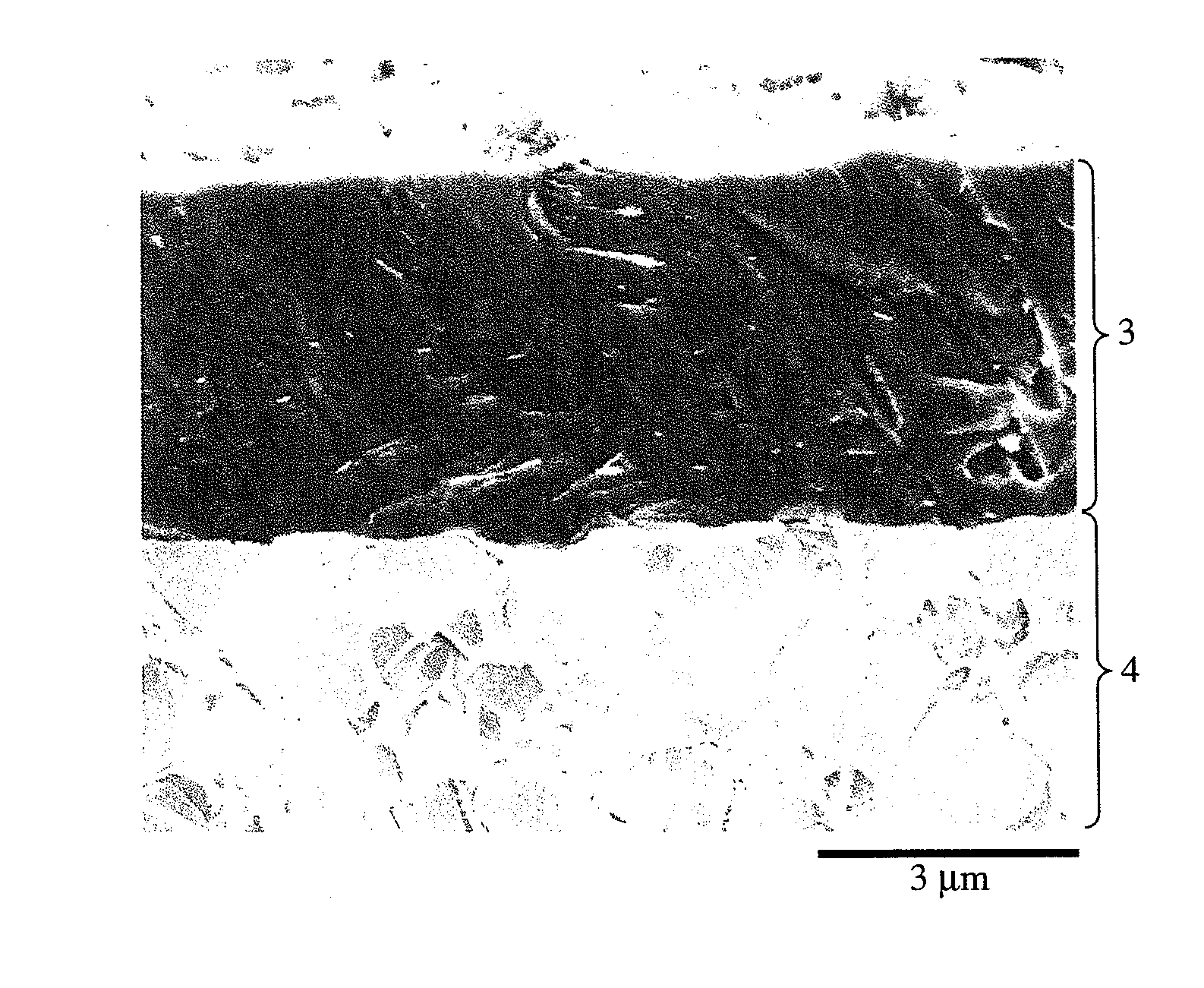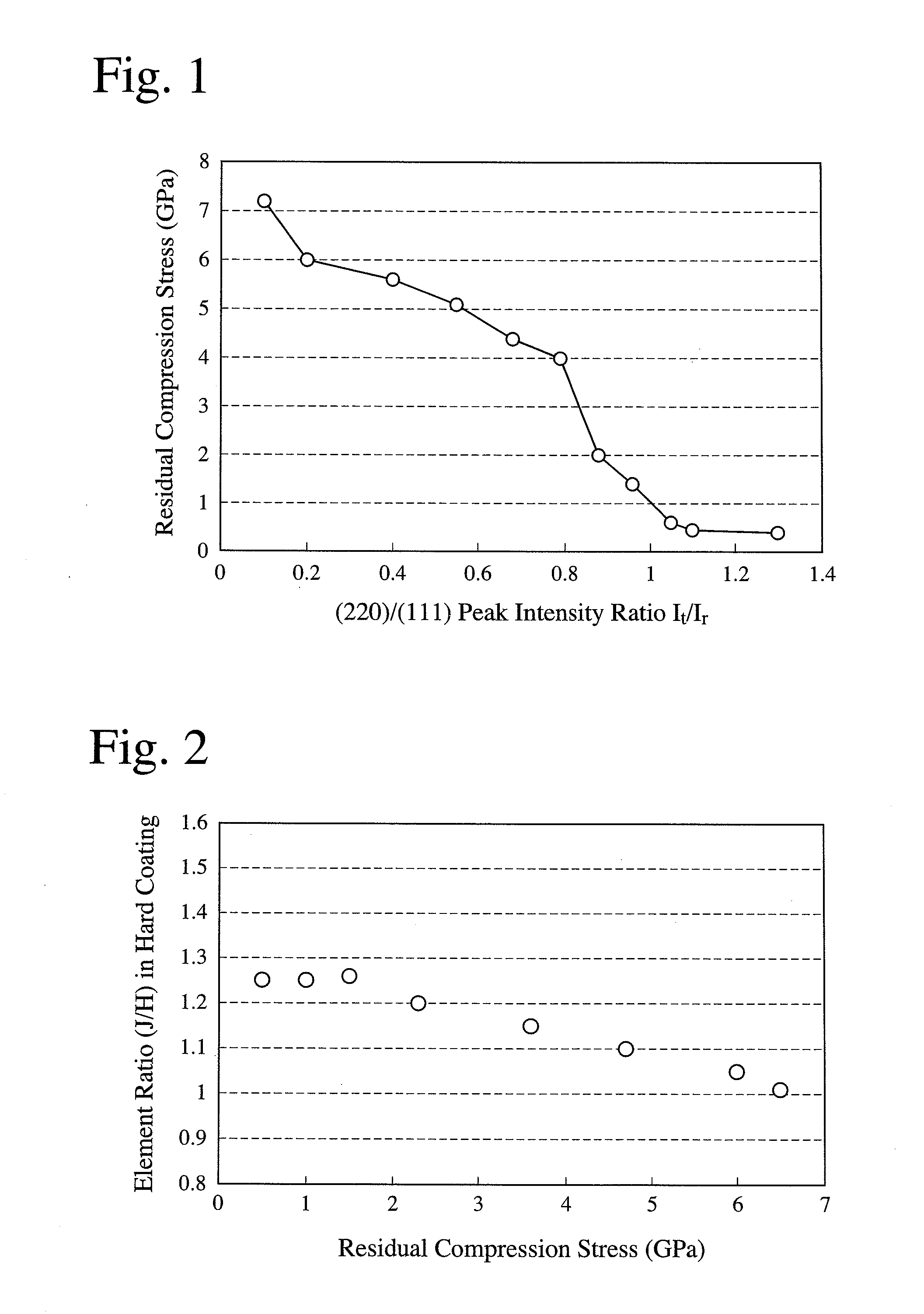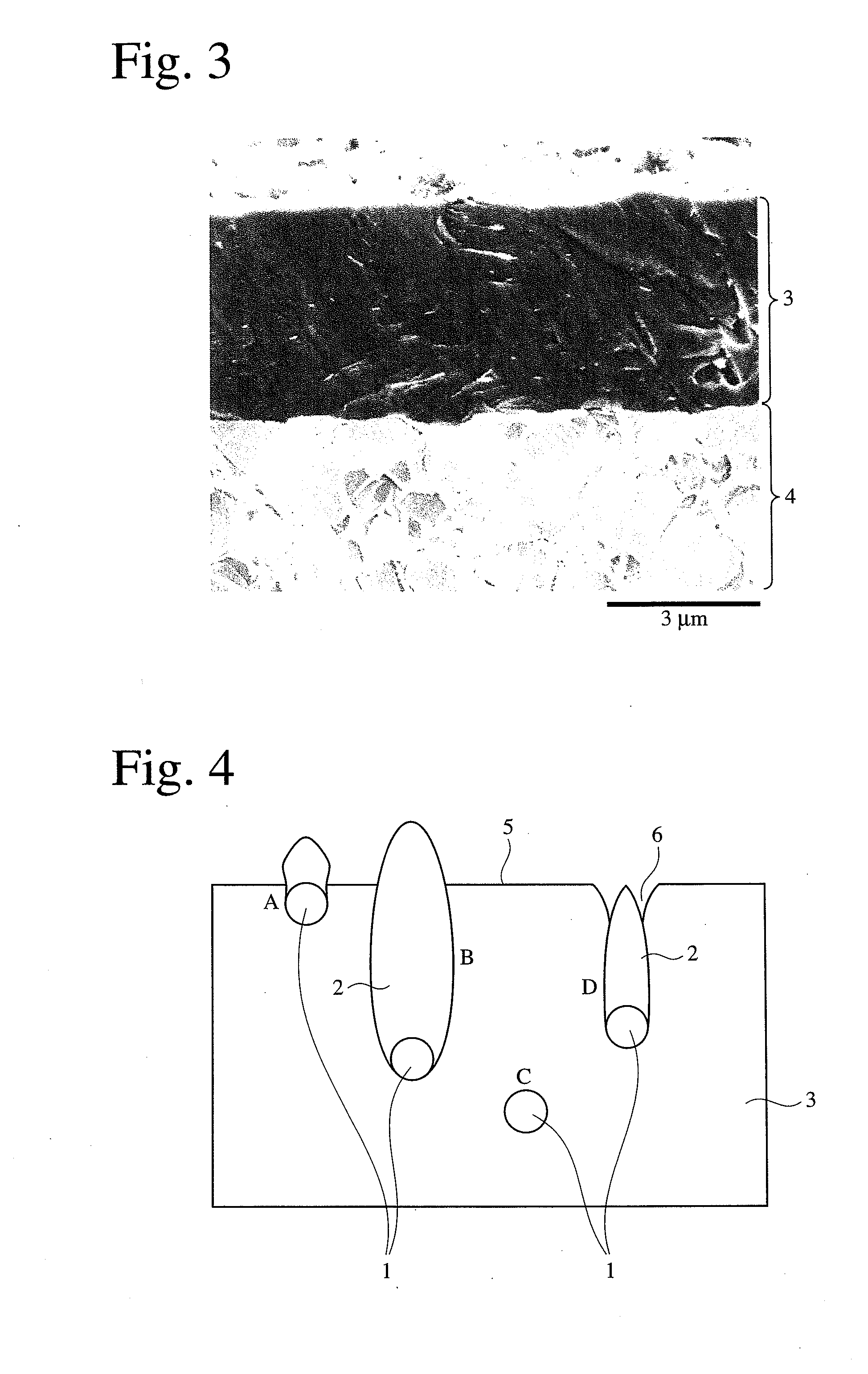Hard-coated member, and its production method
a hard-coated member and production method technology, applied in the field of members, can solve the problems of poor adhesion of pvd coatings of 3 m or more in thickness, poor chipping resistance, and restricted member materials suitable for cvd, and achieve the effects of reducing defects in the coating, high adhesion, and optimal control of residual compression
- Summary
- Abstract
- Description
- Claims
- Application Information
AI Technical Summary
Benefits of technology
Problems solved by technology
Method used
Image
Examples
examples within
[0160]Samples 84 and 85 (Examples within the Present Invention)
[0161]Samples were produced in the same manner as in Sample 1, except for coating hexagonal crystal materials as outermost layers of the hard coatings to increase lubrication. Sample 84 had an outermost layer of TiB2, and Sample 85 had an outermost layer of WC.
[0162]Samples 86-88 (Examples within the Present Invention)
[0163]Samples were produced in the same manner as in Sample 1, except for forming a 10-nm Ti layer (Sample 86), a 200-nm Cr layer (Sample 87), and a 210-nm TiAl alloy layer (Sample 88) as metal layers immediately on the substrates to increase adhesion.
[0164]Samples 113-115 (Conventional Examples)
[0165]Samples were produced in the same manner as in Sample 1 except for changing the composition and thickness as shown in Table 1, with a coating temperature of 450-500° C. and a DC bias voltage of −50 V, which were generally used.
[0166]Samples 116-117 (Conventional Examples)
[0167]Samples were produced in the same...
PUM
| Property | Measurement | Unit |
|---|---|---|
| thickness | aaaaa | aaaaa |
| thickness | aaaaa | aaaaa |
| temperature | aaaaa | aaaaa |
Abstract
Description
Claims
Application Information
 Login to View More
Login to View More - R&D
- Intellectual Property
- Life Sciences
- Materials
- Tech Scout
- Unparalleled Data Quality
- Higher Quality Content
- 60% Fewer Hallucinations
Browse by: Latest US Patents, China's latest patents, Technical Efficacy Thesaurus, Application Domain, Technology Topic, Popular Technical Reports.
© 2025 PatSnap. All rights reserved.Legal|Privacy policy|Modern Slavery Act Transparency Statement|Sitemap|About US| Contact US: help@patsnap.com



